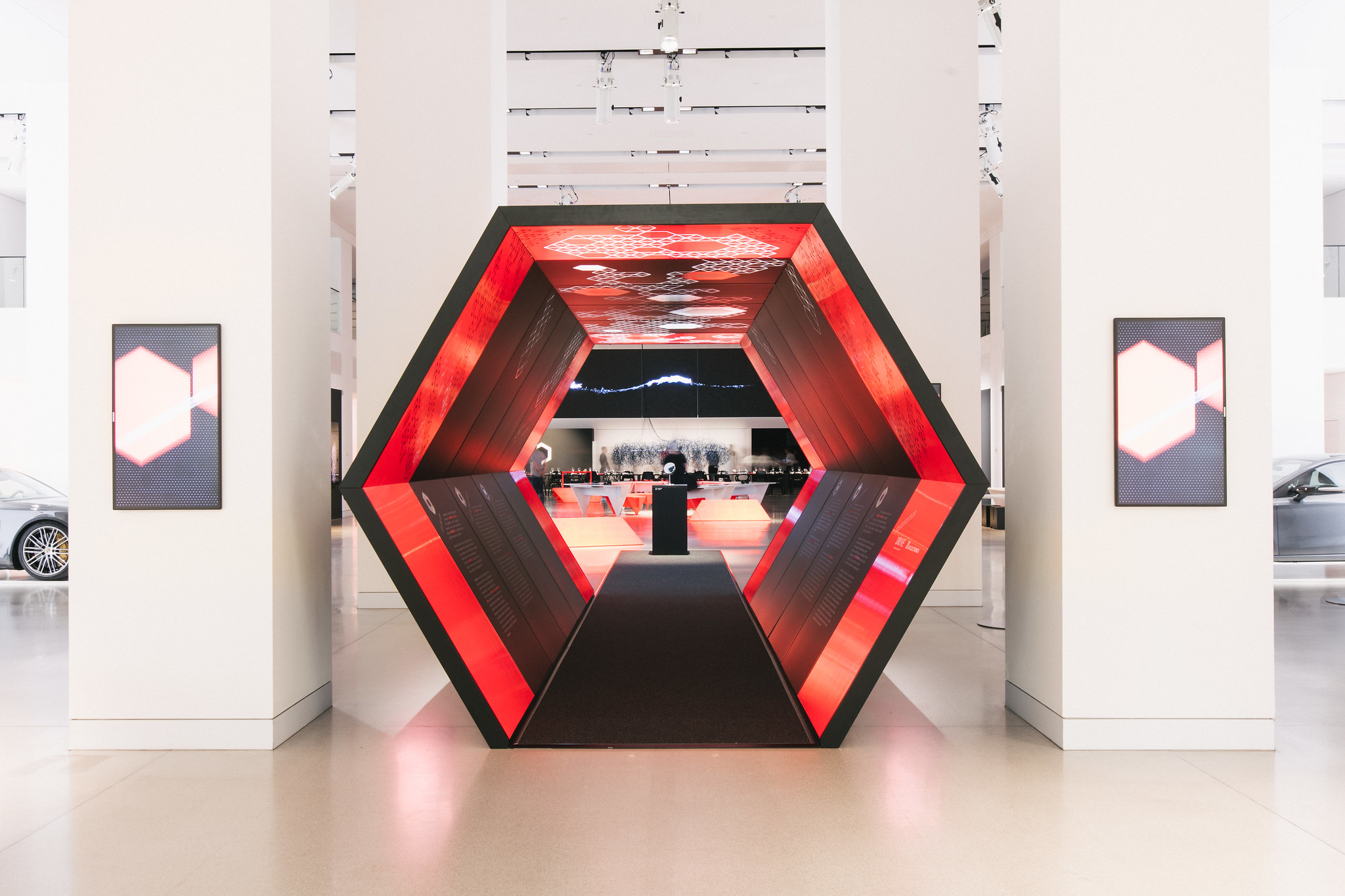By Ars Electronica especially for the DRIVE. Volkswagen Group Forum in Berlin, 14 exhibits by international artists are on display that deal with the theme of “encounter”.
Type: Exhibition
Duration: Juli 21, 2017 – October 26, 2017
City, Country: Berlin, Germany
Venue: DRIVE. Volkswagen Group Forum, Berlin, Germany
For more than three months visitors of the DRIVE. Volkswagen Group Forum in the heart of Berlin have access to the sixth digital media art exhibition. Specially curated by Ars Electronica for Berlin, 14 exhibits by international artists are dealing with the topic of encounters. An additional program will deepen this topic and will invite visitors to start a discussion. The exhibition is open until October 26, 2017. Admission is free.
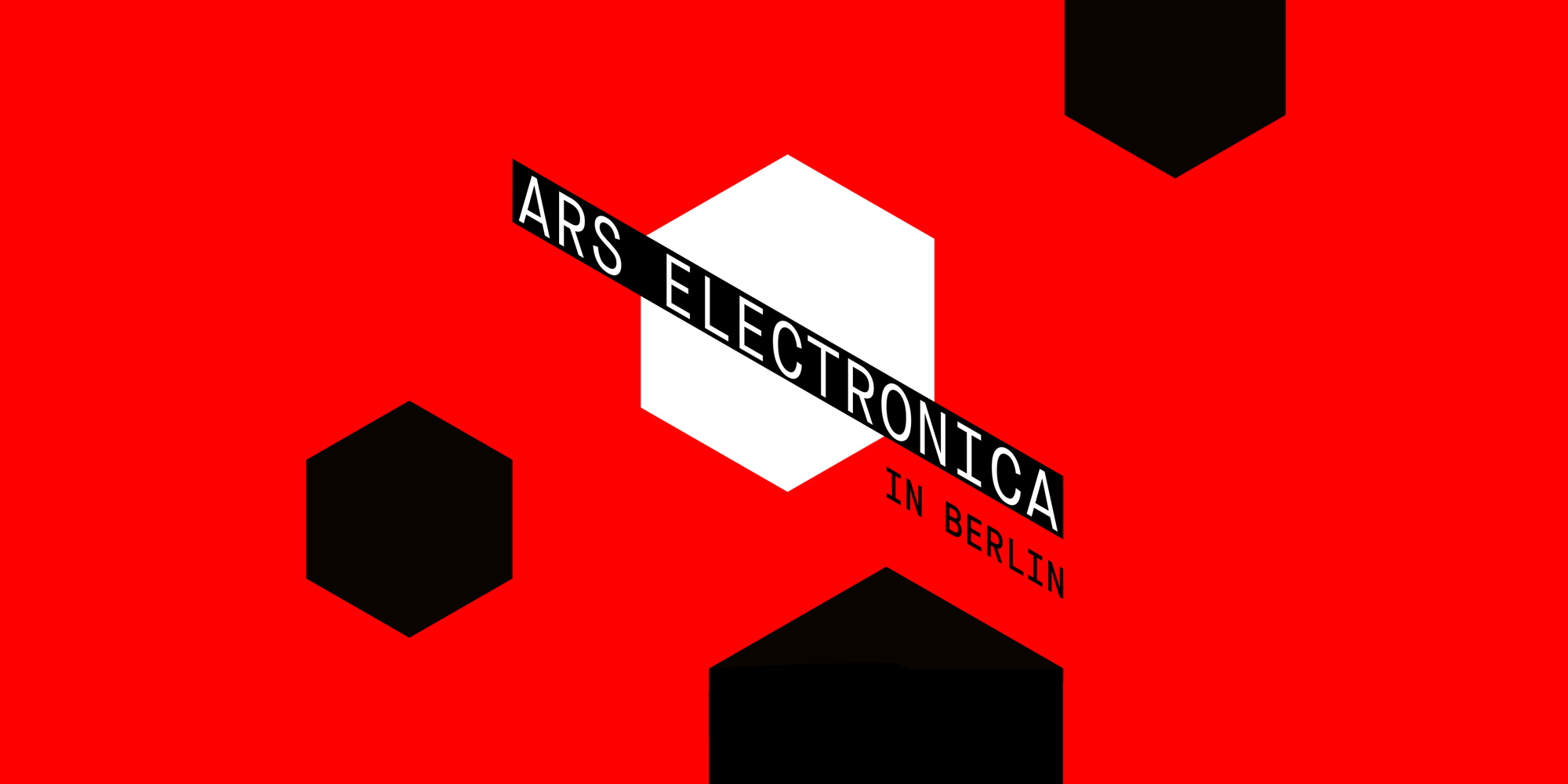
You and I
Let’s talk about your future. Person to person, as equals. Just like we’ve always been taught to do. But what if I weren’t a human being? What if I were a robot, a chatbot or a self-learning algorithm? Would you still want to talk to me, solicit my opinion? What would you think about me, and how would you come across to me? Would you confide private information to me? And speaking of entrusting—what would I have to do for you to be able to trust me? And what may I under no circumstances do?
First and Second Nature
Speaking of nature—everybody’s familiar with the so-called first nature. After all, it’s always been there and you’re one of its creatures. You can see, hear, smell, taste and feel this nature because evolution endowed you with these capabilities, your senses. And you should also definitely help to conserve this nature. Not because this is so romantic but because you couldn’t survive without it. Since you rely on fresh water, clean air and healthy food—in stark contrast to the machines.
OK, and then there’s this second nature. The one you and your fellow human beings have created yourselves. And even though you can’t see, hear, smell, taste and feel this second nature, it influences your life just as strongly as the first one. This second nature is a kind of digital parallel dimension in which you increasingly communicate with other people, in which you do your banking, sign up for insurance and go shopping. People aren’t the only ones who use this parallel dimension; more and more machines and programs do so too.
Admittedly, these are all questions that you probably can’t answer so easily. But then it gets even more complicated—What if it weren’t even possible anymore to clearly differentiate between human beings and machines? What if artificially generated organs and limbs, intelligent prostheses, robotic implants, nano-sensors and such things were body parts that people had come to take completely for granted? How much machinery could you have in and on your body and still be a human being? And what would constitute your nature then?
And Our Future
Ever since people like you have walked the Earth, they’ve been striving to make life simpler, richer and more livable. That’s the only reason human beings develop technology in the first place, why we can look back on so many achievements—and have to look back on several catastrophes as well. After all, the development of technology and thus configuring the future are always open as far as the outcome is concerned. Everything depends on what you do and how you do it. It all depends on you. It order to have a say in which direction you’re changing yourself and our world, you need openness and curiosity, knowledge and critical faculties, courage and optimism. Simply put: All of what makes you a human being.
Artworks
Nelo Akamatsu (JP)
CHIJIKINKUTSU
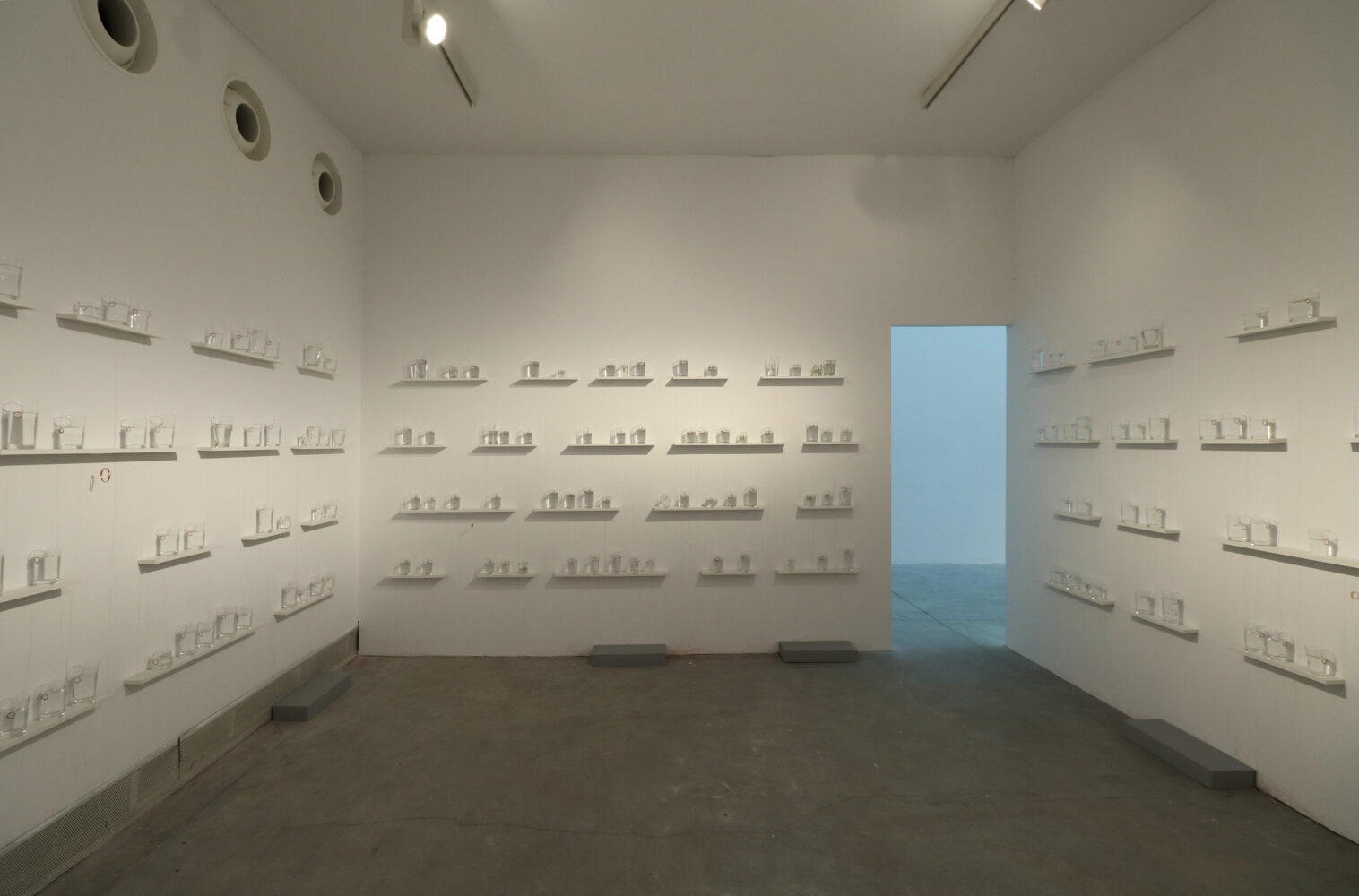
“CHIJIKINKUTSU” is a coinage combining two Japanese words: Suikinkutsu and Chijiki. Suikinkutsu is a sound installation for Japanese traditional gardens, invented in Edo period. The sounds of water drops falling through a pot, buried under a stone washbasin, resonate through hollow bamboo tubes. Since ancient times, the Japanese have been sensitive to perceiving nature as it is, from the sound of winds through pine trees or singing of insects. Suikinkutsu was developed with this kind of delicate sense. Chijiki means geomagnetism: terrestrial magnetic properties that always exist and affect everything on earth, though cannot be perceived by human senses.
“CHIJIKINKUTSU” captures magnetic fields of Chijiki. The needles floating on the water in numerous tumblers are magnetized in advance, so they are affected by geomagnetism and turn themselves in north-south direction. When electricity is supplied to the coil attached to the tumblers it creates a temporary magnetic field that draws the needle to the coil. And the faint sounds of the needles hitting the glass resonates in the space all around. While utilizing the action of geomagnetism, which is normally treated as a subject of science, this sound installation expands the subtle sounds of Suikinkutsu in the context of the Japanese perspective on nature.
Memo Akten (TR/UK)
Learning To See: Learning To Dream
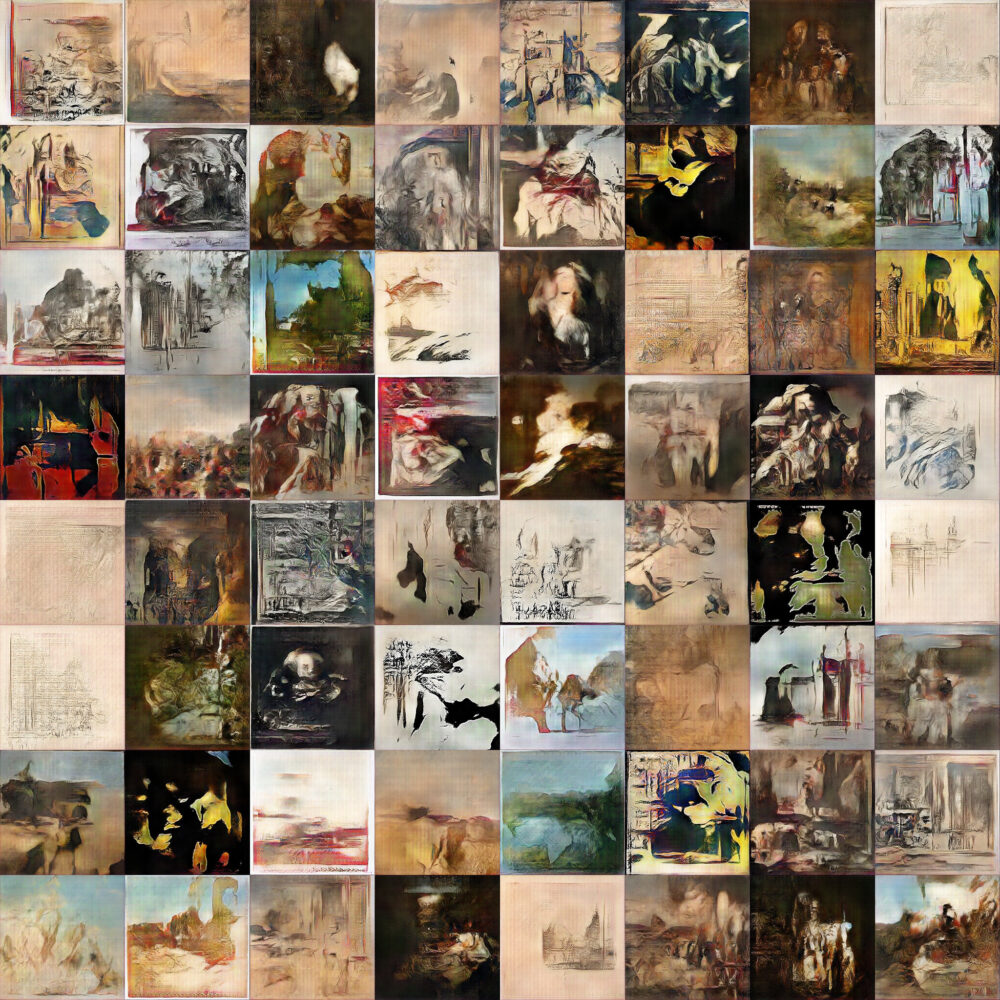
What does it mean to “learn” or to “see”? How do “we” derive meaning from the world we see and communicate our thoughts, our internal state? And what do we want to outsource to machines and their algorithms? “Learning To See” is an ongoing series of works that use state-of-the-art machine learning algorithms as a means of reflecting on ourselves and how we make sense of the world. In this incarnation, an artificial neural network trained on thousands of artworks scraped from the Google Art project, watches the environment via multiple surveillance cameras and tries to make sense of what it sees. Everything that we see and learn is filtered and shaped by our prior knowledge and beliefs. Originally inspired by the neural networks of the human brain, Deep Learning Artificial Intelligence algorithms have been around for decades, but they are recently seeing a huge rise in popularity. This is often attributed to recent increases in computing power and the availability of extensive training data. However, progress is undeniably fuelled by the multi-billion dollar investments from the purveyors of mass surveillance: internet companies whose business models rely on targeted, psychographic advertising, and government organizations with their war on terror. Their aim is the automation of “understanding” Big Data, i.e. understanding text, images, and sounds. But what does it mean to “understand”? What does it mean to “learn” or to “see”? This work is part of a broader line of inquiry about self affirming cognitive biases and the resulting social polarization.
Exonemo (JP)
Body Paint
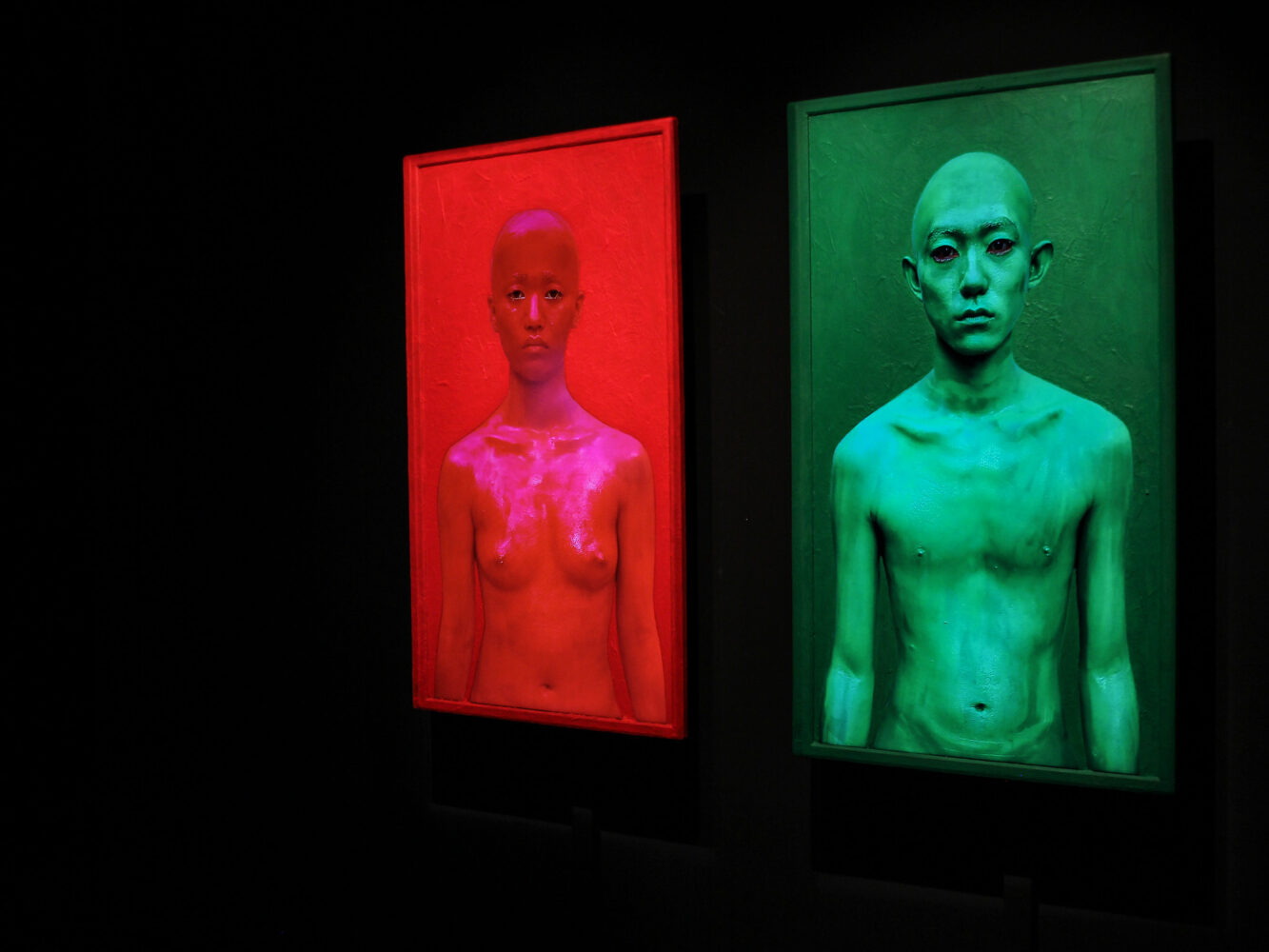
Who are you? Are you human or a bot? To us smart phone-affixed contemporaries, to connect to the Internet at all times and in all places are to complete our person. Even though we do not know with whom we communicate all the time, at least we imagine a humanoid person. It is the power of imagination that helps us to cope with a more and more immaterial world.
This work uses body painting to examine our physical definitions, our physicality, in a world of networked information devices. Each work in this portrait series features a person, nude, shaved, and painted entirely in a single shade of colour, displayed on an LCD which has been entirely painted in the same colour except for the human subject on the screen. With these boundaries erased, the background and foreground being a human body and an electronic display body, each covered in the same colour of paint, the subject can be said to become the sense of ambiguity and confusion, and a questioning of the definition of whether the individual depicted is human being or representation. Apart from these formalistic aspects, this work also deals with issues of “existence” within media. The human body has a fairly well understood longevity horizon, but the longevity horizon for data, and paint, and art remains open to debate. The multiple time scales of body art, figurative painting, and media art engage one another as the work seeks a common ground concerning the present, and existence itself.
Iris van Herpen (NL)
Seijaku
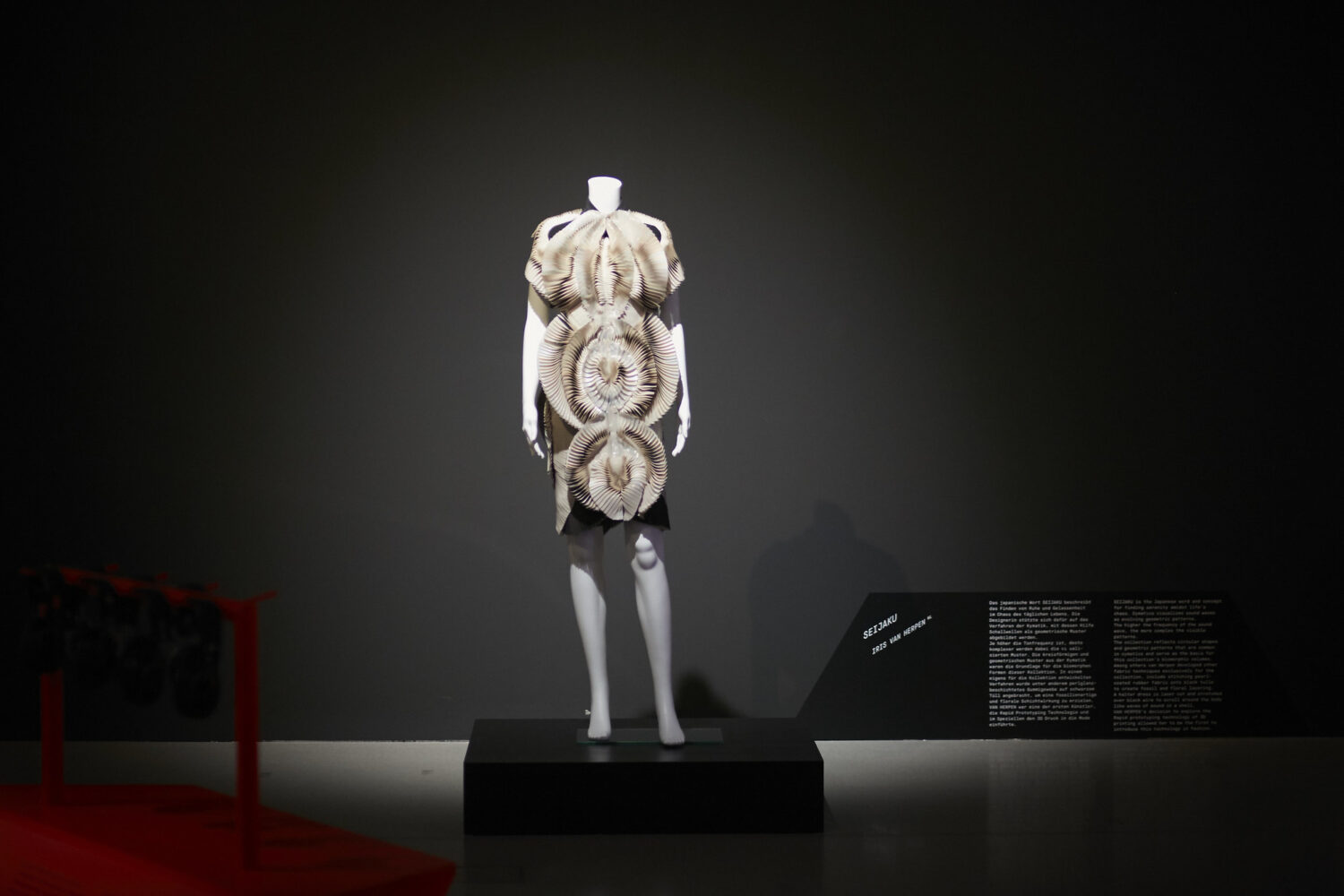
“Seijaku” is the Japanese word and concept for finding serenity amidst life’s chaos. Iris van Herpen explored the study of cymatics for Seijaku and the couture collection was finally presented in Paris on July 4, 2016. Cymatics visualizes sound waves as evolving geometric patterns. The higher the frequency of the sound wave, the more complex the visible patterns.
The collection reflects circular shapes and geometric patterns that are common in cymatics and serve as the basis for this collection’s biomorphic volumes. Among others van Herpen developed other fabric techniques exclusively for the collection, include stitching pearl-coated rubber fabric onto black tulle to create fossil and floral layering. A halter dress is laser cut and stretched over black wire to scroll around the body like waves of sound in a shell.
To provide a seamless experience between the show and its concept, van Herpen collaborated with Japanese musician Kazuya Nagaya to create a Zen bowl sound installation. The artist performed live during the show in the L’Oratoire du Louvre, which was chosen for its exceptional acoustics that fuse the meditative sound waves of the Zen bowls. Within this immersive environment, the models and audience engaged in a collective experience that broke down the barrier between them.
Van Herpen’s decision to explore the Rapid prototyping technology of 3D printing allowed her to be the first to introduce this technology in fashion, and to create astonishing designs with it.
Cornelia Hesse-Honegger (CH)
Seh-Forschung
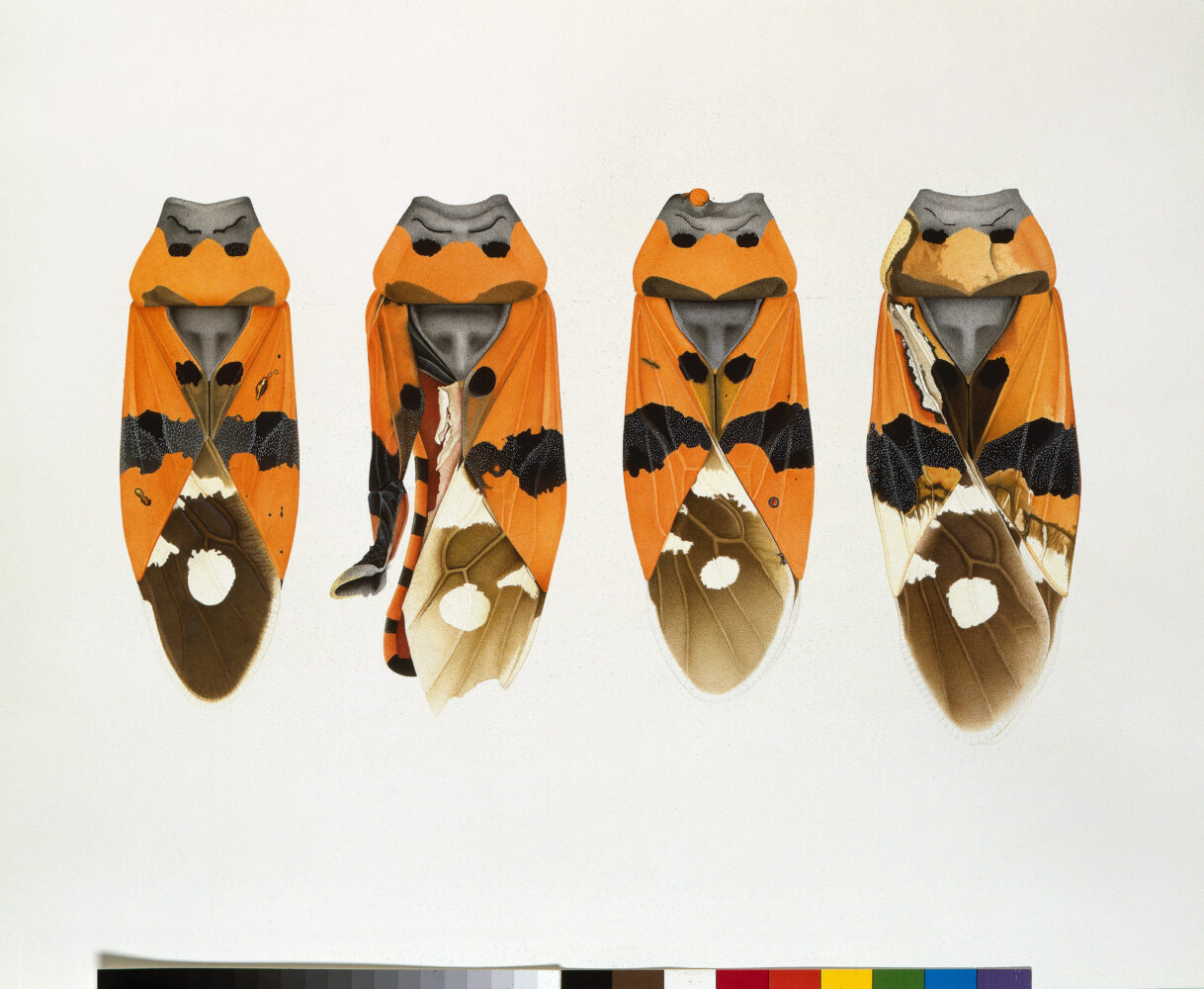
“The function of my art is to raise consciousness, to bring hunches into reality.” Cornelia Hesse-Honegger shows processes of transformation on different levels: on the one hand, it is a question of the deformation processes in nature due to man-made environmental influences. On the other hand, in her “Seh-Forschung” (“visual research”), the artist unites art with science and creates a transformation into a kind of “knowledge art”. She is painting pictures of flies and bugs that have mutated as a result of environmental contamination and atomic radiation. Since the Chernobyl meltdown in 1986, she has collected more than 16,000 insects in the fallout zones of Chernobyl and normally working nuclear facilities internationally. Based on her observations she argues that in regions where the radioactive fallout from Chernobyl hits ground, an increase of percentage of malformed insects can be detected.
Akinori Goto (JP)
toki- series_#03
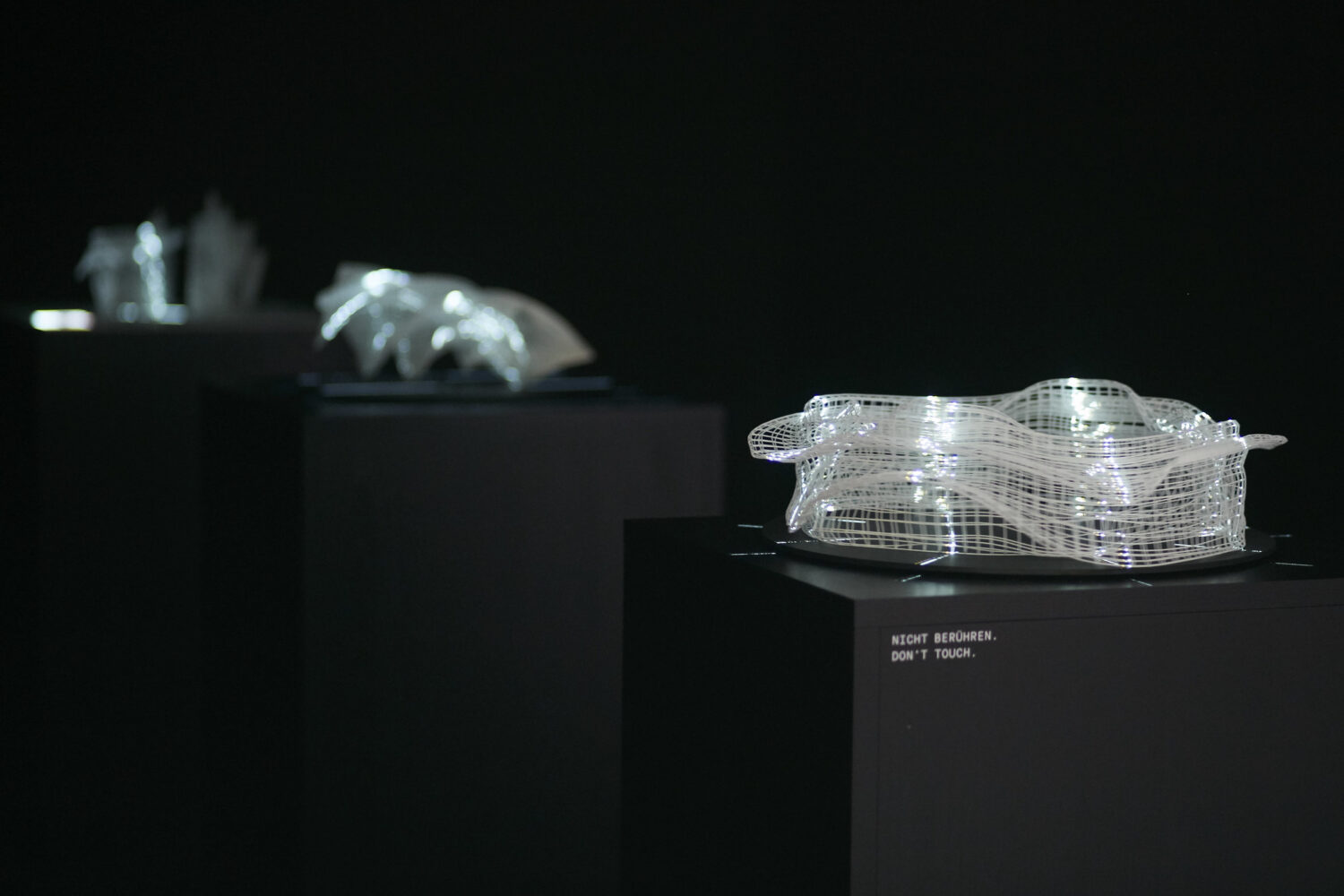
How can time be simulated in terms of location and movement? The Japanese artist Akinori Goto examines time and created with “toki- series_#03” a kind of Zeitskulptur (time sculpure). The title of the work, “Toki”, is the Japanese word for “time” or “moment”. By means of a 3D printer, two-dimensional movements are transmitted to the three-dimensional. Time is thus made visible to the eye, brings back elapsed time, and lets the present time at the moment surmise.
Moments which cannot normally be detected by the human eye are visualized by means of a braid of threads, light and a rotation module. In materialization, the relationship between movement and time is shown as a connecting moment in the background. The wonderful possibilities of time, which arise through movements, are displayed: the possibilities of mingled time and the likelihood of a perspective different from one’s own. By capturing time from various angles in this way, the connections in the background and all sorts of relationships become visible.
https://akinorigoto.tumblr.com
Shinseungback Kimyonghun (KR)
Nonfacial Mirror
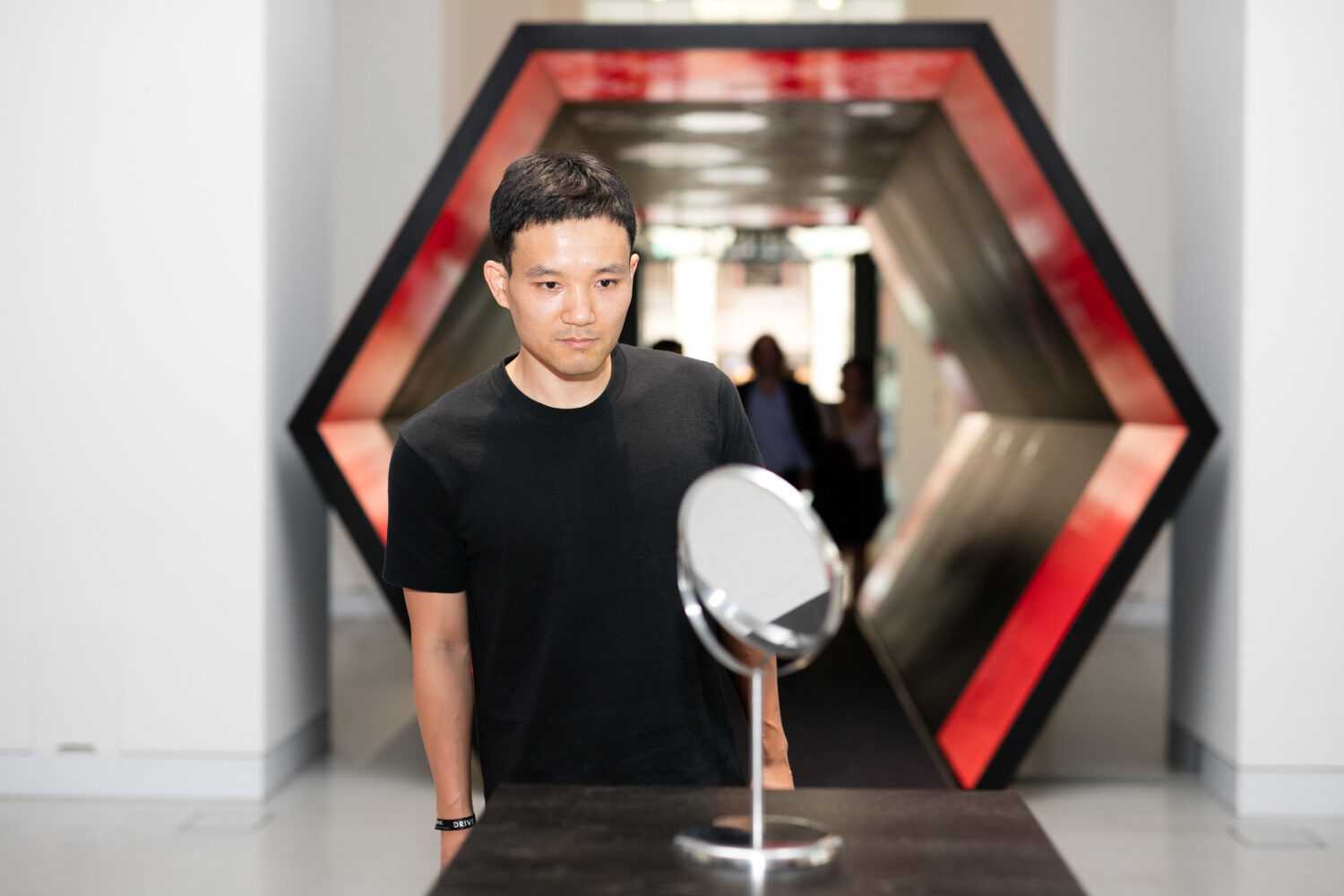
A mirror that turns away? Yes, Nonfacial Mirror avoids faces. One can look at his or her face in the mirror only when it’s a nonface. The irony that one has to make its face a nonface to see it brings to mind the current situation that humans need to think beyond humanity to find its originality against AI.
The mirror resembles an ordinary facial mirror that one can reflect its face in it. But it has a camera that detects faces, and it turns away when it sees a face. In order to see one’s face in the mirror one must distort or cover it, so that it is not recognizable to the face detection algorithm. But: when we outsource our seeing to machines, what does this mean for our own perception? And what is true: what we see, or what the machine sees for us?
Christina Kubisch (DE)
CLOUD 2017
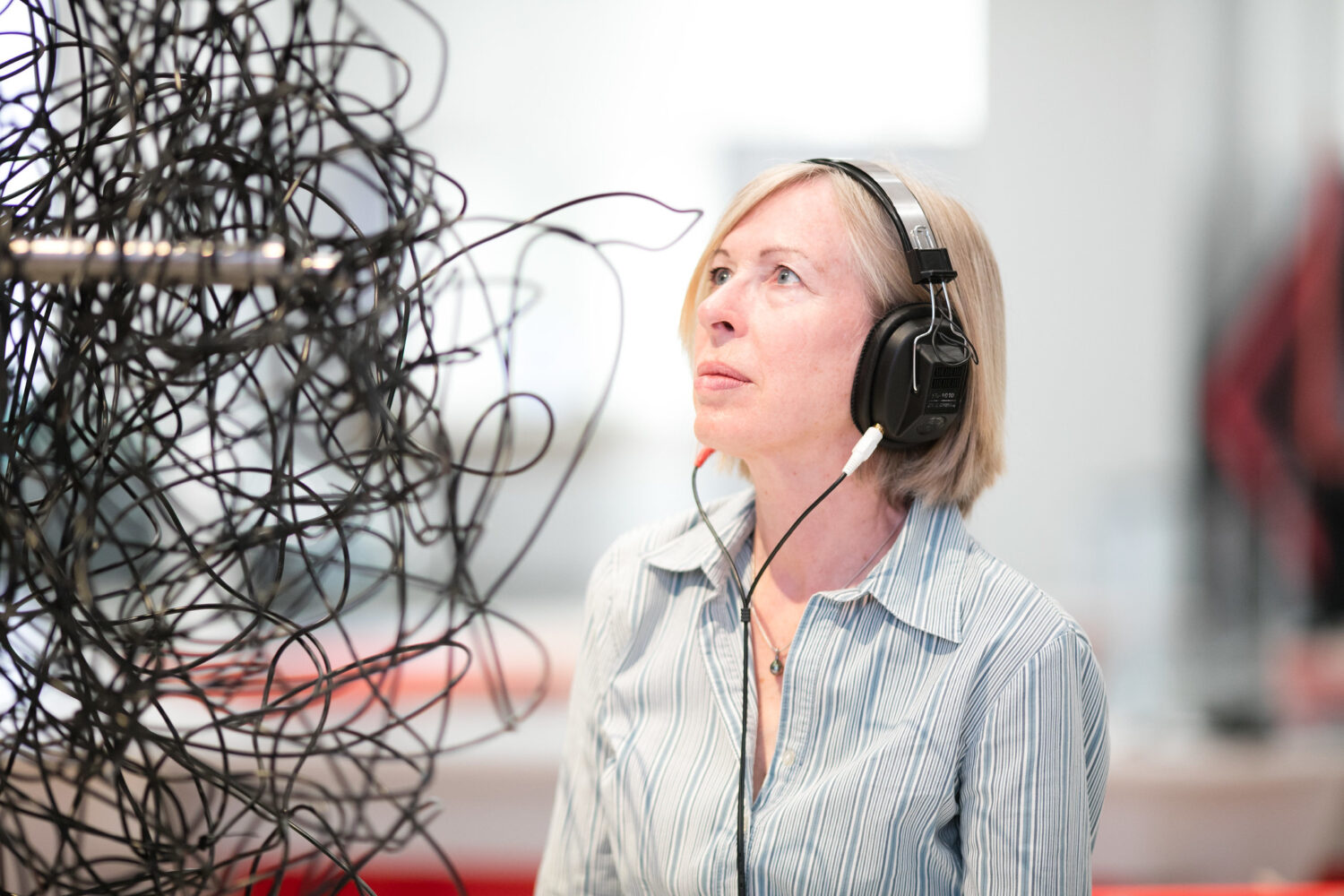
How does data sound? How different can electricity sound at all? “Cloud” refers to the growing technology of storing data in public clouds, private clouds, hybrid clouds or community clouds. The origin of the sounds are electromagnetic recordings made with custom-designed induction headphones in digital transfer facilities, like server rooms, security systems, electrical power stations, and other places with dense electrical activities. The recordings were made between 2010 and 2017 in Europe, Canada, the United States, China, Japan, and in other Asian countries.
CLOUD is a sound sculpture made from 1,500 metres of thick electrical copper cable. The visitor receives a special magnetic headphone that is used to explore the hidden acoustic world of the sonic cable structures. The 12 channels, each with a different composition of electromagnetic waves, can be mixed by the listener. According to the movements around and even beneath the cloud, the person triggers the circulating cable sounds and mixes them into an unlimited number of new combinations.
CLOUD addresses the social effects of modern communication technologies and confronts the observer with a system that translates electromagnetic waves directly into sound, depending on the activity of the visitor. The installation becomes the resonant space of an omnipresent, yet invisible, technology whose social, political, and health effects remain unclear.
Isaac Monté (BE)
The Art of Deception
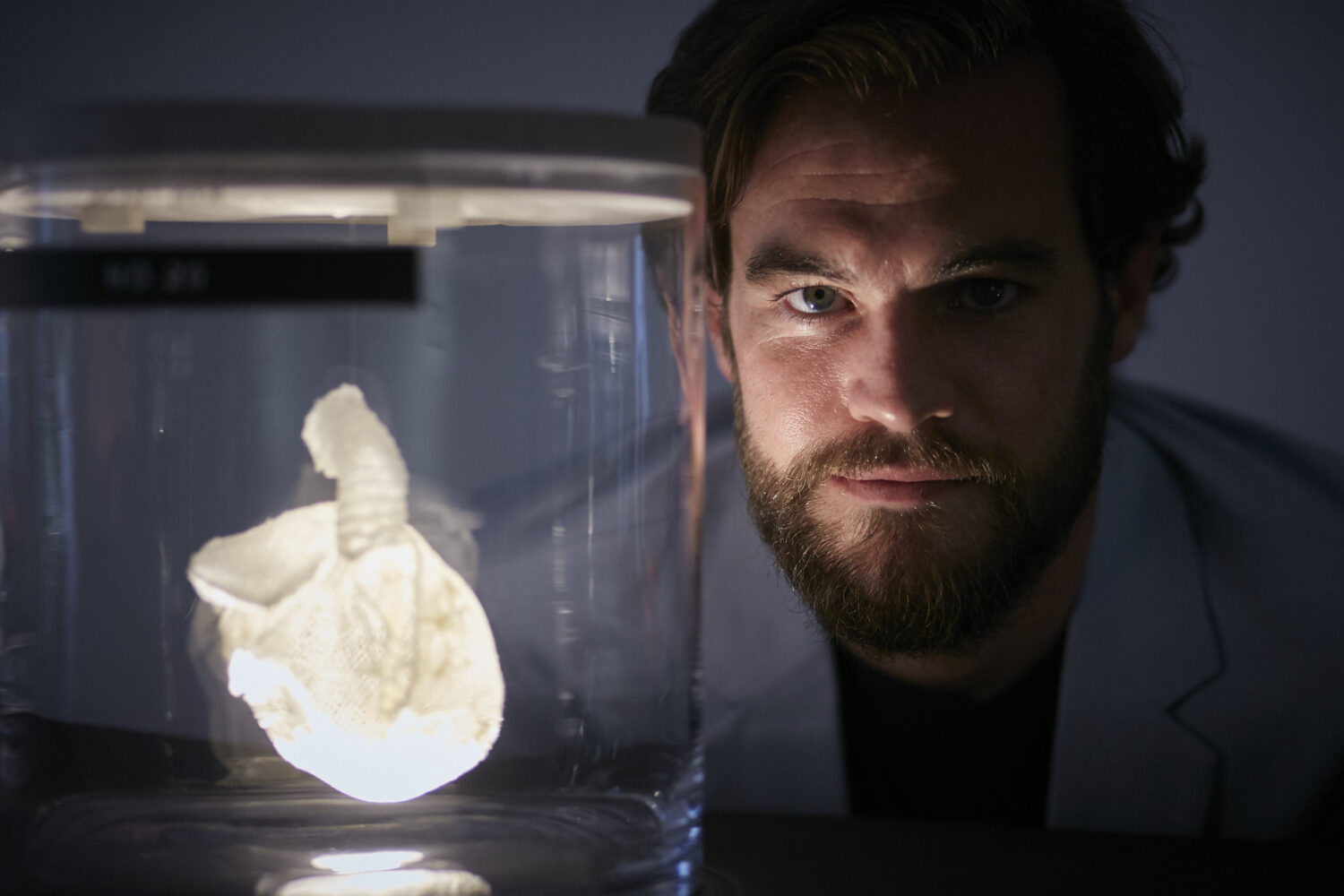
Can organs be objects of design? Will humans be able to manipulate organs for aesthetic purposes? Humans use deception to achieve perfection in society, art and science. Reacting to this through art, the artist has taken discarded pig hearts and transformed them into elegant vessels for new life by decellularizing and re-populating them with various techniques, into aesthetically improved hearts for humans. Decellularization marks a new era of synthetic biology – organs are stripped of their cellular contents, leaving behind a sterile scaffold that can be repopulated with stem cells. While the medical utilization of this resource is being realized, the artistic and creative value of ghost organs represents unexplored territory. With this collection of 21 transformed hearts the artist and his team explore how biological interventions and aesthetic manipulation can be used as tools for the ultimate deception: the transformation of inner beauty, from grotesque to perfect. Can the ghost organ be a blank canvas for designers? The discarded dead hearts will not function as canonical organs, but rather as a representation of how far science can manipulate the human body.
In collaboration with Professor Toby Kiers (Free University Amsterdam)
Commissioned by Bio Art & Design Awards, with the support of ZonMw (The Netherlands Organisation for Health Research and Development).
Quadrature (DE)
Positions of the Unknown
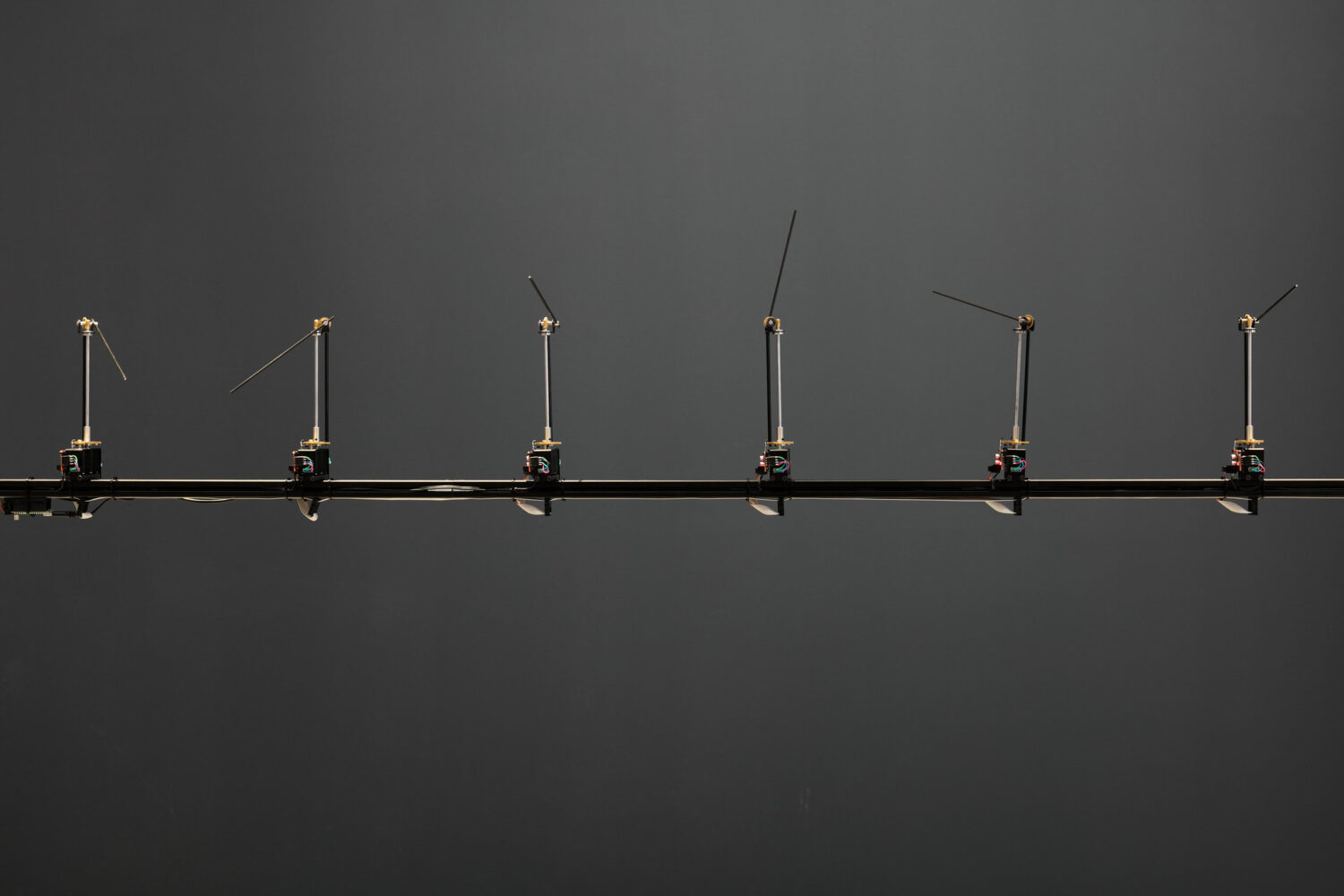
At the very beginning of space exploration the infrastructure to monitor the whole sky was not yet developed. So in order to find out whether foreign countries launched objects, the US government started to train citizens to observe and detect possible artificial satellites. Scattered over the allied world, these amateur scientists played a crucial part in keeping track of all men-made technology orbiting earth, until “Operation Moonwatch” was discontinued in 1975.
But existing knowledge and passion did not disappear together with the public mandate and the participating civilians found another sphere of interest: discovering and exposing those objects, whose existence is denied by official sources.
Until today a devoted group of amateur astronomers runs an alternative catalogue, containing about 450 datasets missing in the officially published lists. Most of these classified objects are still defined though and their true nature is known. But for currently 52 objects no specifications are available. Only their locations can be calculated.
“Positions of the Unknown” locates the current whereabouts of these mysterious objects by simply pointing at them as they revolve around Earth. Missing the legal proof, those unidentified artefacts remain entities of pure speculation, secret companions of us and our planet. Even so they have been sighted several times and their ubiquitous presence is therefore somehow validated, they linger in a state between existence and non-existence. Quadrature’s 52 small machines constantly follow their paths and serve as silent witnesses of the unknown.
Mariano Sardón (AR) in collaboration with Mariano Sigman (AR)
Wall of Gazes
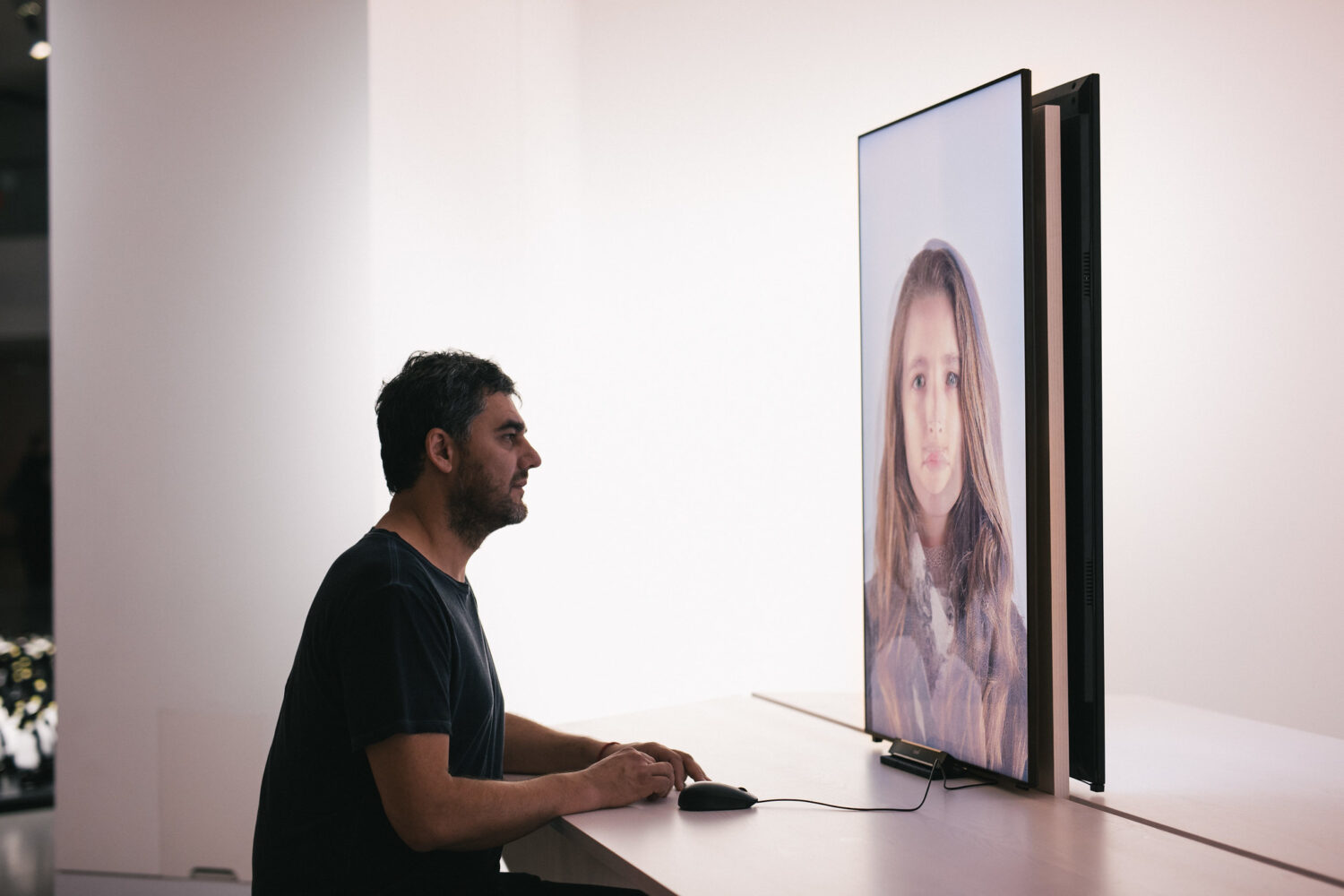
Who are you? Where do you come from and where do you go to? These questions, which represent the most natural of the world of children, are becoming more and more restrained in the course of the adolescence. However, precisely today, in times when the term “Heimat”/”homeland” is more associated with relationships between people than with places, the question “who are you” is of particular relevance.
The Wall of Gazes aims to engage people with the way we see each other and build images of others. In his work Marian Sardón combines his interest in the other with artistic and scientific methods: The work consists of several screens on which visitors can watch video sequences showing portraits of immigrants and refugees revealed by the gazes of many persons simultaneously. Gazes are captured when participants are using an eye tracking devices. The eye tracker is positioned in the same place where the screens are mounted. Viewers can see in real time how the images of faces are constructed by the gazes of participants.
The eye tracker allows viewers to see those parts of the face that are actually looked at and those parts that remain “unseen” when attention is focused elsewhere on the portrait. The eye tracking device is a metaphor for a sort of “cultural device” that guides us when we encounter otherness. In the exhibition there is the possibility to try the Eye-Tracker live.
Daniel Rozin (IL/US)
Penguins Mirror
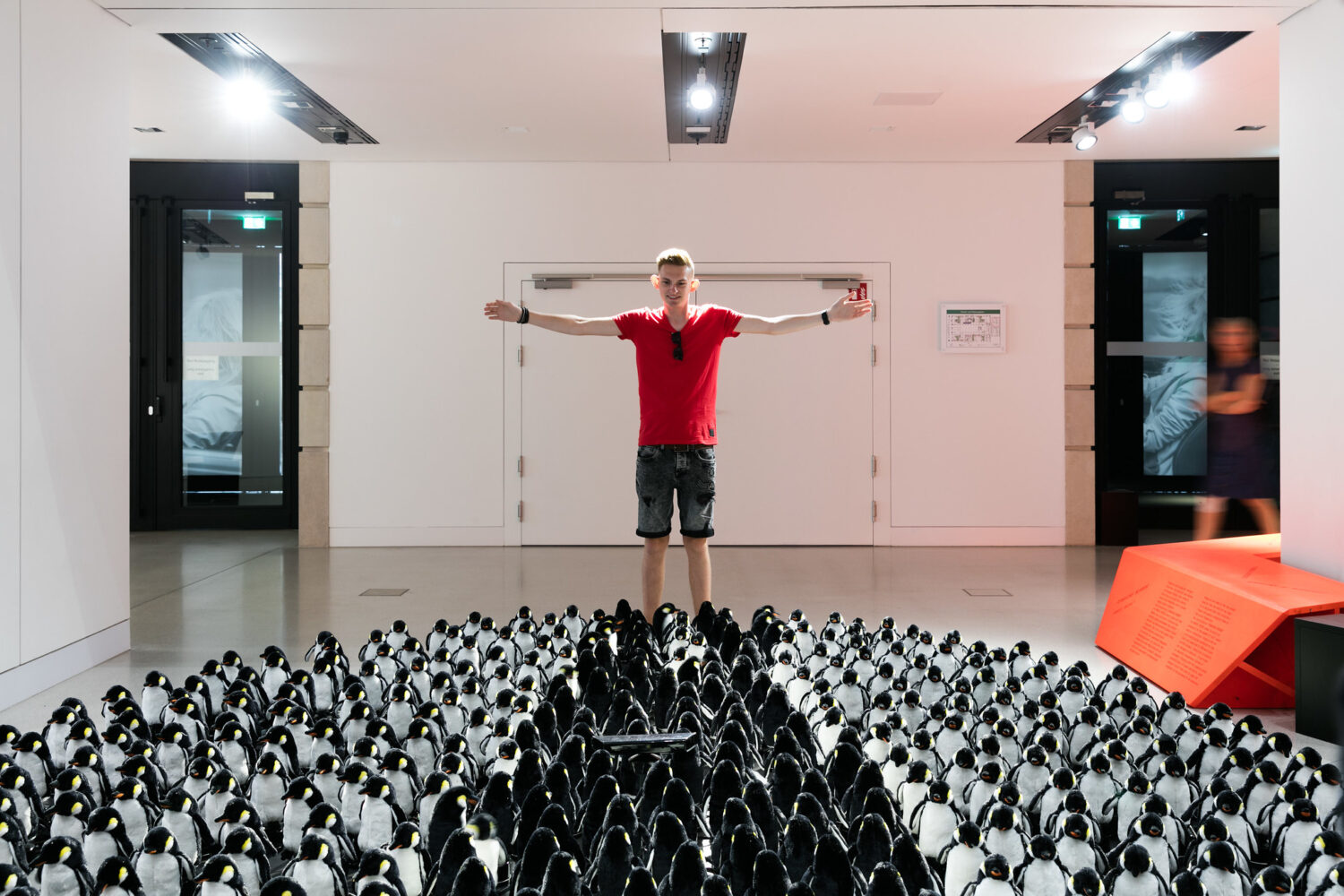
Penguins are some of the few animal species that can walk on two legs. It is believed that this could be a reason why people recognize them in the birds themselves.
The installation “Penguins Mirror” by Daniel Rozin seems to build up precisely at the moment of self-awareness or reflection: Penguins Mirror is an installation scattered on the floor and comprised of 450 motorized stuffed animals. Reductive in palette, yet baroque in behavior, it performs an absurdly homogeneous system of movement. Playing with the compositional possibilities of black and white, each penguin turns from side to side and responds to the presence of an audience. As they perform, the penguins’ collective intelligence is puzzling, yet somehow familiar, as the plush toys enact a precise choreography rooted in geometry.
Penguins Mirror is Rozin’s 14th piece in a series he calls “Mechanical Mirrors”. Started originally in 1999 with Wooden Mirror this series comprises kinetic-mechanical sculptures that create the viewers’ likeness and mimic their movement like a mirror would. This series of pieces investigates various materials and techniques as platform for image creation.
Penguins Mirror is unique in this series as it is the first piece to brake the vertically opposing correlation between the viewer and the piece. As Penguins Mirror is scattered on the floor and not hung on the wall, the relationship with the piece is less symmetrical and rather imposing. Interacting with this piece feels more like conducting an orchestra or commanding an army of cuddly penguins. As with some other recent pieces in the “Mechanical Mirror” series, Penguins Mirror responds to the viewer with more than an immediate mimicking motion, when a viewer leaves the piece the penguin perform a goodbye dance as they await a new viewer.
Maja Smrekar (SI)
K-9_topology: ECCE CANIS
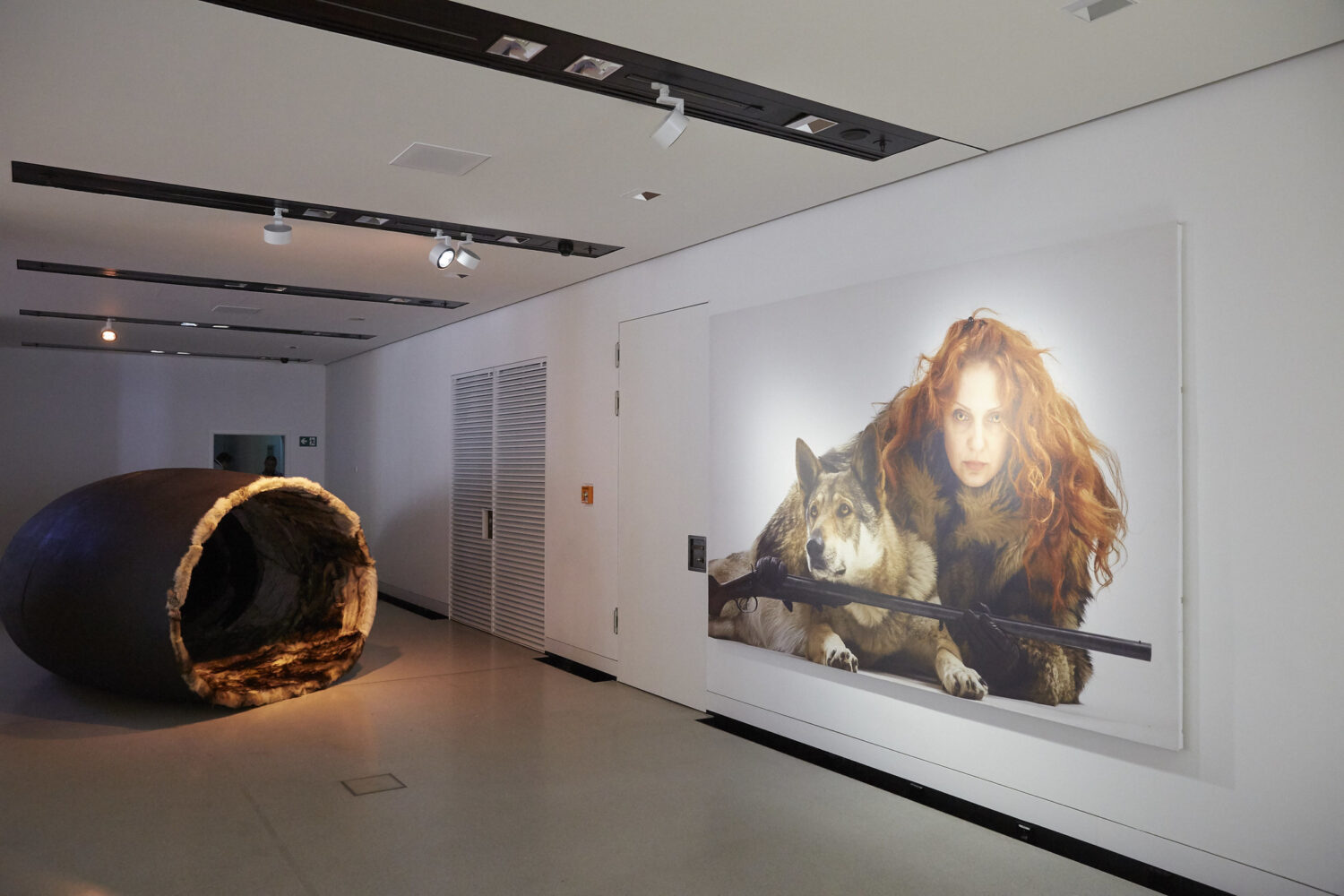
Where do we come from? What are we? And where are we headed? Maja Smrekar’s work of art revolves around issues humankind has been wrestling with since time immemorial. The work entitled “K-9_topology: ECCE CANIS” focuses on metabolic processes; chemists used serotonin, a tissue hormone and neurotransmitter, provided by the artist and her dog Byron, a Scottish Border Collie, to create a fragrance that symbolizes the chemical essence of the relationship between a human being and a dog.
ECCE CANIS dwells on the research of metabolic pathway processes that trigger emotional motif that connects humans and dogs to successfully coexist together. For thousands of years humans have had been developing a lack of perception of smell which decreased inversely with the development of culture that predisposed behavioral skills in verbal/sound and visual communication, while the „chemistry” of smell remained an imperative in dog´s perception. Several genes in dogs and humans have been evolving in parallel as adaptation to similar environments. The gene that has consequently – as a process of taming – mutated almost in parallel – is the one that codes for the serotonin transporter SLC6A4. Polymorphisms on this gene are one of the key molecular mechanisms for both species to be able to tolerate the presence of others. Humans and dogs have been therefore taming themselves mutually?
The installation is designed as an immersed living environment based on the reference of a spherical cave – as a paraphrase of where it all begun. Since wolves and humans started to live together even before the Agricultural revolution, they have both been living in caves. The public is able to interactivelly experience a sensor installed respirator that works as an initiation into an essence of the relationship of the artist and her dog companion.Their serotonin has been isolated out of their blood, and transformed into an odor by perfume chemistry protocols.
Yamanaka Laboratory (JP)
Flagella
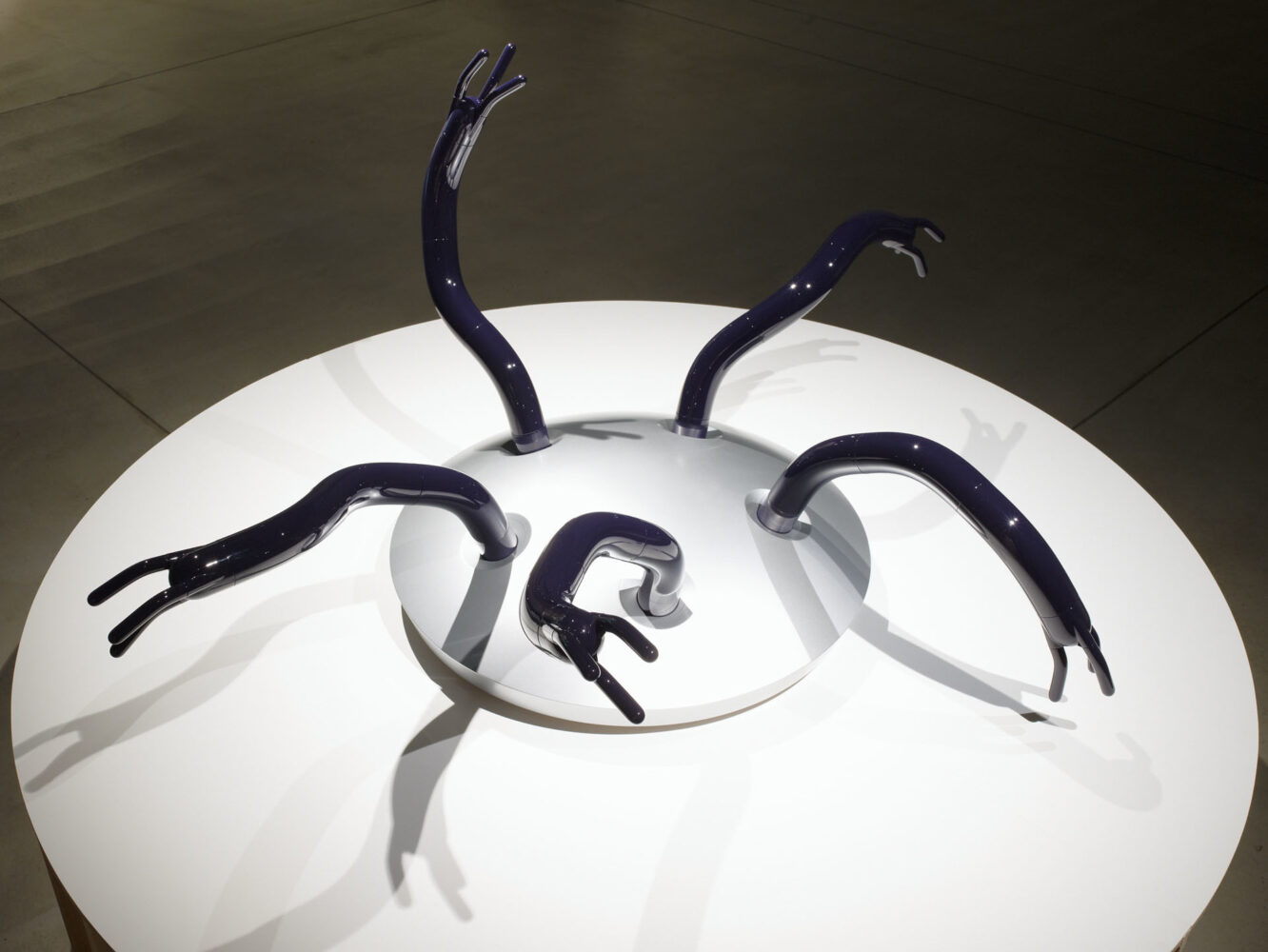
Direction by Shunji Yamanaka; Design / Engineering by Mitsuru Muramatsu, Yusuke Kamiyama
Robots have been described in recent years as behaving more ‘creature-like’. But no matter how creature-like they may become, a certain degree of clumsiness and unnaturalness remains. What is this perfect ‘creature-like’ movement that cannot be achieved, even with a full command of modern technology?
Robotic motion is a result of controlling the movements of numerous linked motors with complex programs. However, there is a limit to replicating the actions of flexible anatomy, such as muscles and tendons with a single motor. Is there not a simple mechanism to achieve “creature-like” behavior?
Yamanaka Laboratory has created “Flagella”, a structure that has come to life through the pursuit of a middle ground between natural and artificial movement. Powered by a motor with three units, this simple machine repeatedly rotates and counter-rotates with movements that seem supple and smooth, although the device is made from inflexible materials.
Associated Artworks
This exhibition, in addition to taking a curatorial approach to mediating visitors’ confrontations with the theme of encounter in general, endeavors to present state-of-the-art processes and prototypes in the exhibition context, and also to continue accounts on six subjects—You & Me, Reflection, Transformation, Extension, Simulation and Trust—in terms that add depth to these narratives. Accordingly, on the tables and built-in monitors, you will find selected documentation of those works that were submitted for 2017 STARTS Prize consideration and, above all, display particularly high potential for innovation and creativity at the nexus of science and art, technology and industry.
The competition to select the 2017 recipients of the STARTS Prize was conducted by Ars Electronica Linz in cooperation with BOZAR and Waag Society. This is the second year that the European Commission has awarded these two prestigious grants endowed with €20,000 each. starts-prize.aec.at
YOU & I
Beyond Humans: Perception & Understanding of Actions of Others
Ramiro Martin Joly-Mascheroni
starts-prize.aec.at/de/beyond-humans
Out of Exile
Nonny de la Peña, Emblematic Group
emblematicgroup.com
Library of Ourselves
BeAnotherLab
beanotherlabalreadyexists.wordpress.com
TRUST
Rock Print
Gramazio Kohler Research, ETH Zurich, und Self-Assembly Lab, MIT
gramaziokohler.arch.ethz.ch/web/e/forschung/297.html
I’m Humanity
Etsuko Yakushimaru
yakushimaruetsuko.com/archives/2602
Digital Synaesthetic E.E.G. KISS
Karen Lancel and Hermen Maat / STEIM
lancelmaat.nl/work/e.e.g-kiss/
REFLECTION
HYPNAPOD
Unconscious Collective
www.hypnapod.com
Bug’s Beat
Yumi Sasaki, Dorita Takido
youtu.be/A-76-RjMzI8
Smog Free Project
Dan Roosegaarde / Studio Roosegaarde
www.studioroosegaarde.net/project/smog-free-project
TRANSFORMATION
Smog Tasting
The Center for Genomic Gastronomy
genomicgastronomy.com/work/2011-2/smog-tasting/
Treelab
Marcus Maeder, Roman Zweifel
www.researchcatalogue.net/view/215961/215962
Make Do and Mend
Anna Dumitriu
annadumitriu.tumblr.com/FEAT
3arabizi Keyboard
Hadeer Omar
www.hadeeromar.com/3arabizi-keyboard
EXTENSION
Sensorial Skin for an Intelligent Guerilla Beehive
Anne Marie Maes
annemariemaes.net
project RAIDEN
Kour Design
www.kourdesign.com/raiden
The Dermal Abyss
Katia Vega
www.katiavega.com
DuoSkin
Microsoft Research / Natural Interaction Group
MIT Media Lab / Living Mobile Group
duoskin.media.mit.edu
SIMULATION
Imaginary garden
VA Lab
www.vgap.org/portfolio-ccbc
Mimus: Coming face-to-face with our companion species
Madeline Gannon
atonaton.com/mimus
Blink: Humanising Autonomy
Adam Bernstein, Raunaq Bose, Leslie Nooteboom, Maya Pindeus
www.humanisingautonomy.com
